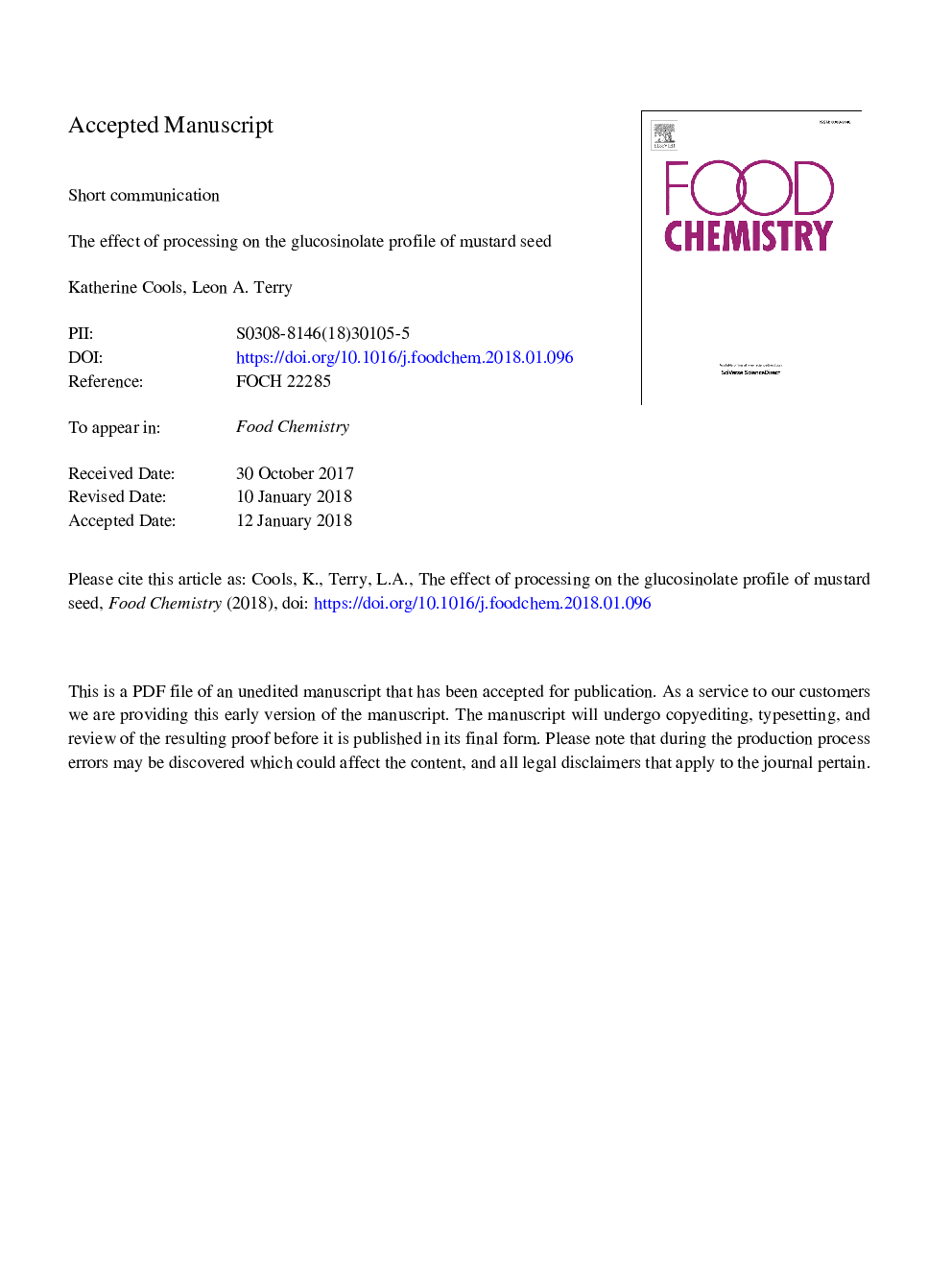| Article ID | Journal | Published Year | Pages | File Type |
|---|---|---|---|---|
| 7585825 | Food Chemistry | 2018 | 19 Pages |
Abstract
Brassica juncea mustard seed are used to make mustard paste or condiment. Mustard seed contains glucosinolates which are converted to isothiocyanates following cell disruption by the enzyme, myrosinase. Isothiocyanates are sulphur-containing compounds which give a pungent flavour to the mustard condiment. Three mustard seed cultivars from two seasons were processed into Dijon- and wholegrain-style mustard and glucosinolates and isothiocyanates analysed. Canadian cv. Centennial tended to contain higher glucosinolates compared with the French cv. AZ147 and Ukrainian cv. Chorniava. Conversion of the mustard seed into a wholegrain condiment had a lesser effect on total isothiocyanates and sinigrin content compared with the Dijon-style preparation. The Canadian mustard cultivars produced wholegrain-style mustard with higher total isothyocyantes and sinigrin compared with the French and Ukrainian cultivars. In summary, results herein suggest that Canadian mustard seed cvs. Centennial and Forge, and wholegrain processing may result in a condiment with greater bioactive composition.
Related Topics
Physical Sciences and Engineering
Chemistry
Analytical Chemistry
Authors
Katherine Cools, Leon A. Terry,
